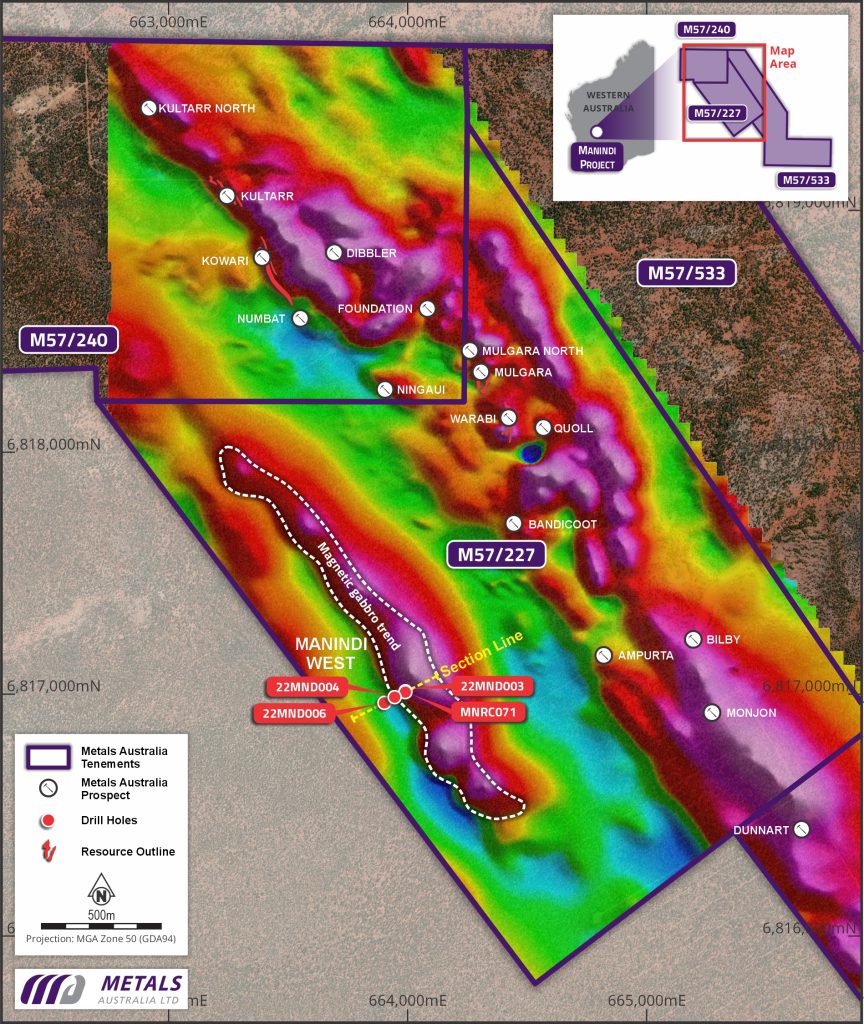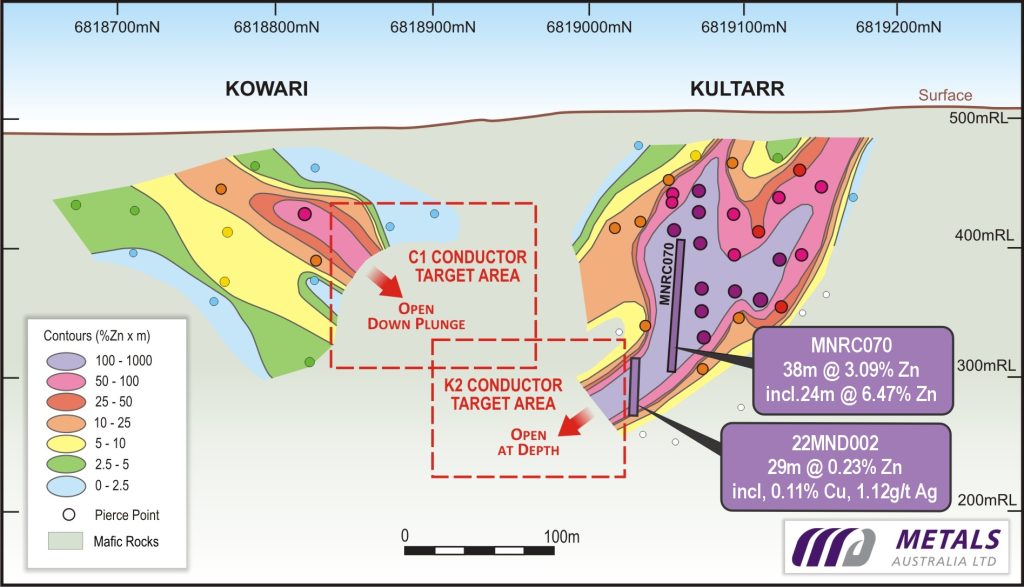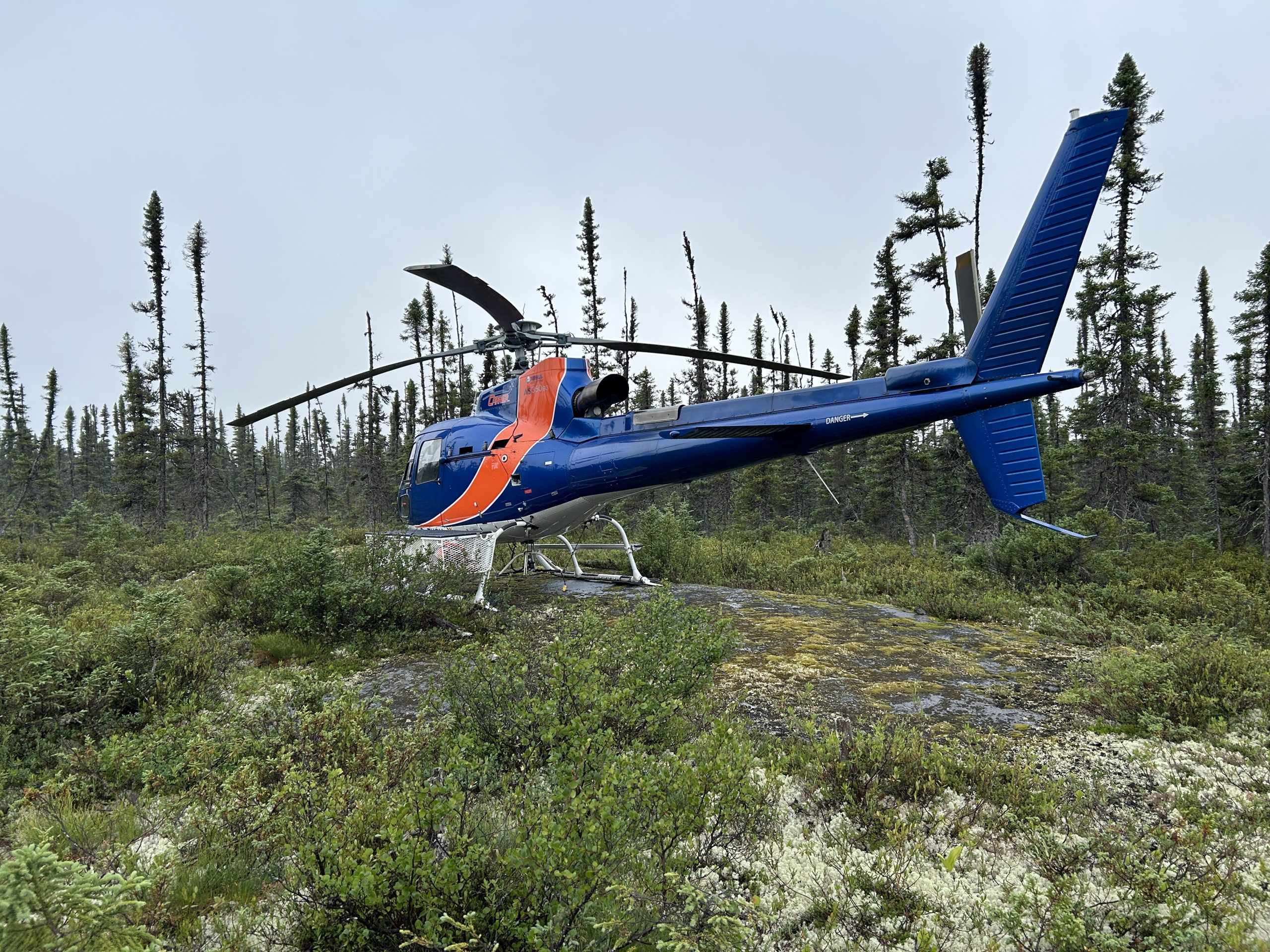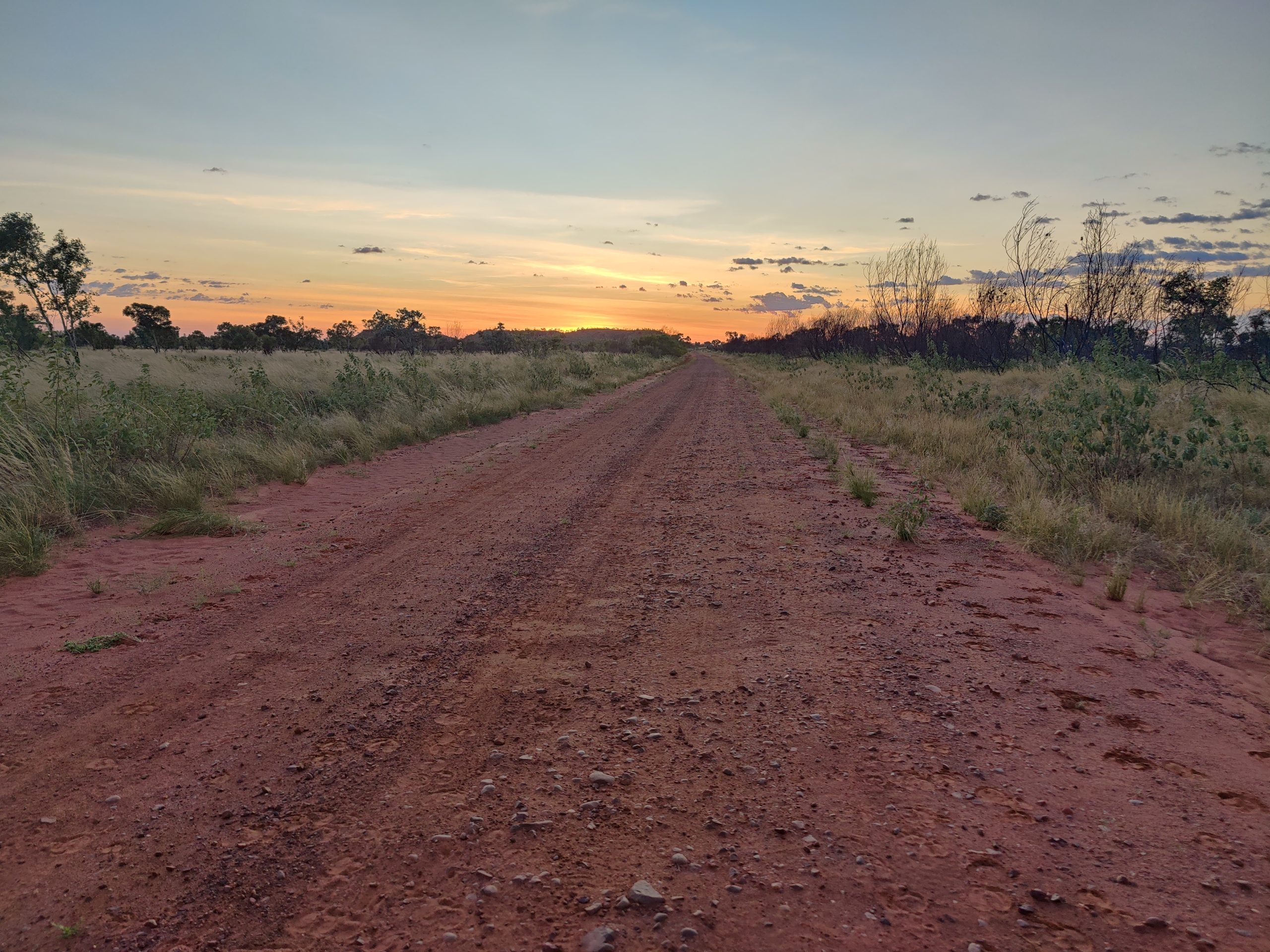Manindi Critical Minerals Project, WA (MLS 80%)
The Manindi Project includes three granted Mining Leases (MLs) situated approximately 20 km southwest of the Youanmi Gold Mine in the Murchison region of Western Australia, approximately 500km northeast of Perth.
- Manindi Vanadium-Titanium-Magnetite Project (VTM): high-grade VTM project in close proximity to the zinc-copper-silver resource outlined below.
- Manindi Zinc-Copper-Silver Resources: high-grade zinc with copper project with existing Mineral Resource – 1.08MT at 6.52% Zn, 0.26% Cu, 3.19 g/t Ag.
Vanadium-Titanium-Magnetite Project (Manindi West VTM Project)
The VTM Project is within a 2 km long magnetic trend. (See Figure 1)
High-grade Titanium-Vanadium-Iron – Significant Intersections:
- 58.18m @ 0.36 V2O5, 23.4% TiO2, 28.8% Fe (22MND004)
- 129m @ 0.23% V2O5, 11.5% TiO2, 41.0% Fe (22MND003)
- 70m @ 0.32% V2O5, 12.19% TiO2, 29.3% Fe (MNRC071)
Metallurgical test work was conducted using a composite sample from 22MND004 as representative of the drilling completed so far.
Metallurgical test work results produced two commercially attractive products (Table 1). Product 1: High-grade Iron-Vanadium Pentoxide product grading 66.0% Fe and 1.19% V2O5 and Product 2: Titanium Oxide-Iron product grading ~ 43.8% TiO2 and 32.0% Fe.
Table 1: Metallurgical test results summary from LIMS & WHGMS processing of 22MND004 core sample
Both products were produced with low levels of impurities. Over 65% of ore sample mass was recovered into the two products (combined product yield). Production of the products was based on simple lab bench tests utilising crush, grind and magnetic separation phases.
Further metallurgical test work is evaluating optimum grain size for recovery and grade for Product 2. This work aims to improve liberation and separation targeting both magnetic and density differences within the material. A target TiO2 grade range of 47-49% is being sought, consistent with higher grade ilmenite contract specifications.
Product evaluations have already occured with an interested potential end user. Feedback received has been positive, confirming grade and size ranges preferred by end users that have been fed into the next stage of metallurgical testing.
Based on the results achieved the company advanced drill planning and permitting for a drilling program to test the discovery target and the 4 identified look alike targets (Refer Figure 10). A drilling program is underwayband results will be advised when available.
The primary objective of the drill planning is to assess the geometry outlined by the magnetic trend which is observed to extend around 2km in length, and which is interpreted to represent the gabbro host which contained the discovery holes. The magnetic map indicates that the trend may also extend up to 200m in width. Drilling to date identified the mineralised zone approximately 50m below surface.
A key outcome of a first phase of drilling is to validate an exploration target that can provide the confidence needed to progress to more detailed resource definition drilling. The discovery zone (alone) has excellent potential to advance as a key second project for the company.
Subject to success validating the discovery zone, further opportunities to expand overall project scale via drilling of the four additional look alike targets, targets, 2 through 5 will come into planning focus. All targets are situated within granted mining leases. Refer to the discovery zone – “Manindi West Magnetic Intrusive” outlined in Figure 1 below.
Figure 1: Manindi West Project Map (Magnetic Image – reduced to pole, first vertical derivative), indicates lookalike targets to the discovery zone [Target 1], from a high-resolution magnetic survey

Figure 2: Manindi V-Ti-Fe Project – X section showing position of holes referenced in overview along with mineralised intervals and grades
Manindi Zinc-Copper-Silver Resource
Existing Mineral Resource of 1.08 Mt at 6.52% Zn, 0.26% Cu and 3.19 g/t Ag (including Measured: 37,697 tonnes @ 10.22% Zn, 0.39% Cu, 6.24 g/t Ag; Indicated of 131,472 tonnes @ 7.84% Zn, 0.32% Cu & 4.6 g/t Ag; Inferred: of 906,690 tonnes @ 6.17% Zn, 0.25% Cu & 2.86 g/t Ag).
In late 2024, the company commenced a revaluation of the project, given its proximity to the high-grade Titanium-Vanadium-Iron project and trends in metal prices for zinc, copper and silver. While uncertainty still exists regarding the near-term outlook for zinc, recent price movements have resulted in a significant lift to the mineral value of the resource.
As a result, the company is conducting a comprehensive review of all available information related to the project – including the existing JORC Mineral Resource and potential extensions.
The key aim of the review is to refine resource extension targets that can be drilled to support an increase in the current Mineral Resource. Previously completed and reported down hole electromagnetic work (DHEM) has identified drill targets at depth including those between the known Kultarr and Kowari Resources (Figure 3).
The current Mineral Resource lies within 2 kilometres of the high-grade VTM project outlined in the section below. The ability to grow both projects in parallel also presents an opportunity for a potential combination project, where synergies for potential operations and processing can be further explored in a potential future scoping study. Alternative synergy opportunities within the broader region will also be investigated to determine the best way for value to be created for both the existing Zn-Cu-Ag resource and the high-grade VTM project.

Figure 3: Manindi Project Overview, Regional Magnetics, Resource Locations (red) & VTM Project

Figure 4: Kultarr and Kowari Longitudinal Projection with MNRC070 Intersection






